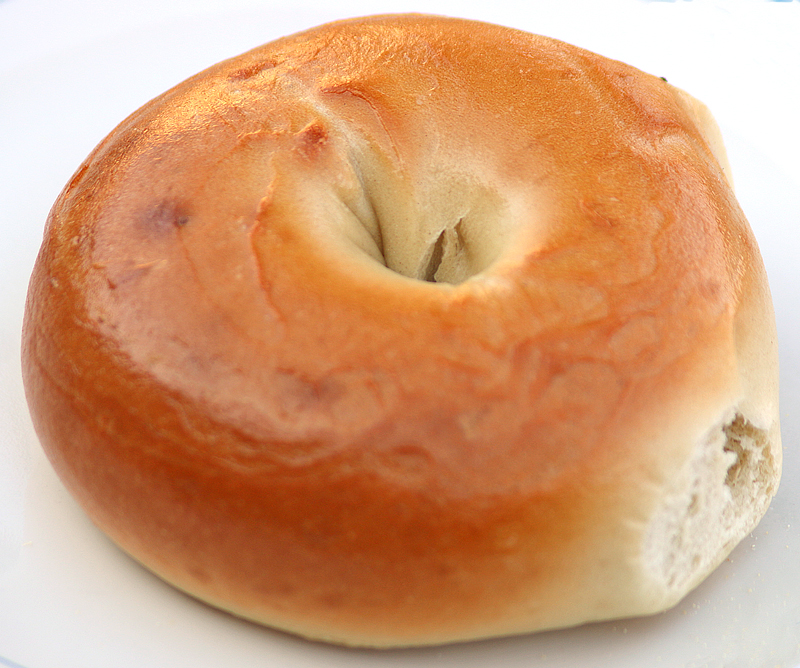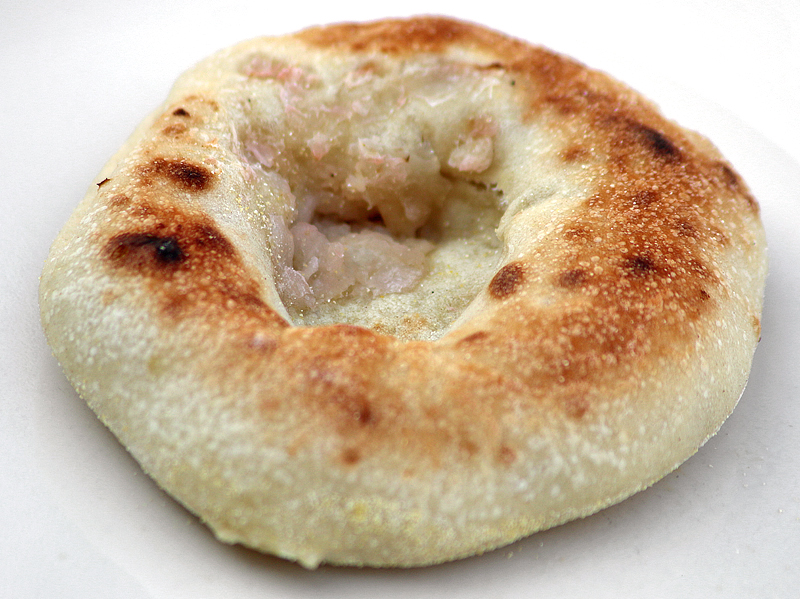Note: This article pertaining to I Got My Bialy Fix. Um…What Is a Bialy, You Ask?!? was originally published on Monday, December 4, 2017 at 9:52 in the evening and has been updated.
Whenever I would visit New York, I usually indulge myself with food which I cannot typically enjoy where I am based in Georgia. Pastrami on rye with spicy brown deli mustard — with a potato knish and both sour and half-sour pickles — is usually tops on the menu; and that wonderful nectar known colloquially as New York City tap water is a must for me as well…
I Got My Bialy Fix. Um…What Is a Bialy, You Ask?!?
…but fresh bagels and bialys are high on the priority list as well. The fragrant aroma of assorted flavors of bagels — plain, garlic, poppy seed to name only a few — filling up the cabin of the car while I drive is tantalizing at the least; but of the bialys is nothing short of euphoric for me.
Wait…I’m sorry…what did you ask me? What is a bialy? Grab a seat and get comfortable. You may have read about my mentioning a bialy in such articles as this one pertaining to the decline of Kosher delicatessens and this one with my experience and review of One World Observatory in New York; but I never really actually explained it.
Once upon a time, the bagel and bialy were brethren known primarily in the Jewish communities of New York. A grandfather might leave the warmth of his apartment to brave the snow and the wind on his trek to the corner bagel bakery to pick up a dozen bagels and a dozen bialys for his children and grandchildren before they came to visit. “Don’t forget the lox and cream cheese,” his wife would remind him every time. “And get some other appetizing as well,” referring to potato salad, macaroni salad, cole slaw, chopped liver, herring and other delights.
The bagel eventually emerged from relative obscurity and swept the United States in many different forms — some of them sheer abominations of its traditional form — but not the poor lonely bialy, which is still only known in New York City and sparse pockets of neighborhoods elsewhere.
The word biały means white in Polish, as it is a form of white bread; and its namesake is a town in Poland called Białystok, which I almost visited when I was in Poland earlier this year — but not only did I run out of time and not visit; but I also understand that bialys are no longer produced and sold there anyway, as the Jewish population in that town had been decimated as a result of the Holocaust during World War II.
Amongst other personal belongings, Jewish people who emigrated from Poland to the United States — especially New York — brought the recipes to bake bialys, which must be made by hand if they are to be authentic.

A bialy is flatter than a bagel, as demonstrated in the photographs shown above and below. Rather than a shiny smooth crust, a bialy is softer and powdered with flour; and instead of a hole, a bialy has an indentation with some onion filling. Although it is not as dense as a bagel — whose dough is boiled prior to the baking process — a bialy is still chewy.

In my opinion, a bialy is at its best when served fresh and hot immediately out of the oven — so hot that it is difficult to handle at first; and so hot that it can steam up a window in the car — even during the middle of summer.
Bialy makers will tell you that the flavor of a bialy is similar to that of an English muffin. I personally disagree, as I have never craved for an English muffin — but then again, I do not exactly have the most refined palate in the world, either.
I was initially saddened when I learned that the company from which I purchased bagels and bialys moved from near where I once lived in Brooklyn to Oceanside on Long Island — as though the end of a long tradition had arrived…
…but on a visit to New York some years ago, I went to the new location of Bagels by Bell to pick up a dozen bialys — but as they are not using New York City tap water, will the flavor be compromised?
No. The bialys were as fresh, hot and good as ever. Perhaps when Warren Bell — the owner of Bagels by Bell who inherited the business from his father — is at the facility, I will be able to photograph how bialys are “still ‘pulled’ by hand with the middle indented by thumb”.
Final Boarding Call

Although its business is baking and distributing bialys throughout the New York City metropolitan area — and to some locations outside of that area — the facility is open to the public. A dozen bialys set me back only six dollars in 2017 — a modest price for such delectable goodness — and a dozen bagels were the same price; but even if they increased in price, they are still well worth the experience. Credit cards are not accepted.
Bagels by Bell d/b/a B&S Bialy
Brooklyn Bagel A.C.E. Specialties LLC.
3333 Royal Avenue
Oceanside, New York 11572
718-272-2780
718-272-2789 Fax
Open to the public from 8:30 in the morning through 4:00 in the afternoon on weekdays; and from 8:30 in the morning through 1:00 in the afternoon on Saturdays and Sundays.
The facility is located only ten miles east of John F. Kennedy International Airport; so if you find yourself on a long stopover, you can head out to get yourself some authentic New York bagels and bialys, as the ride is only 25 minutes in duration each way.
If you would rather pick up your fresh bialys in Manhattan, head on over to Kossars Bagels & Bialys, which has been in business since 1936. Each dozen of bialys or bagels will cost you $15.00; and the bialys are available in six varieties, which includes olive, garlic, and sun-dried tomato and pesto.
Kossars Bagels & Bialys
367 Grand Street
New York, New York 10002
212-473-4810
212-253-2146 Fax
All photographs ©2017 by Brian Cohen.
